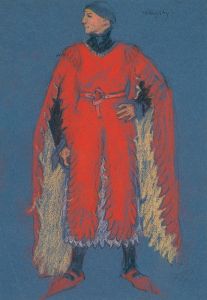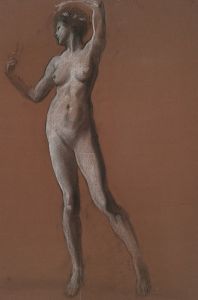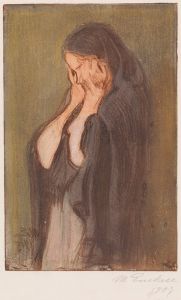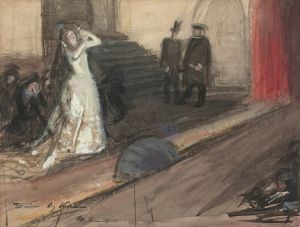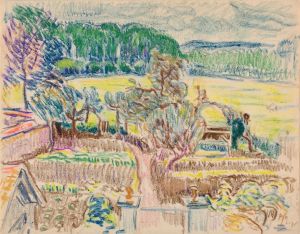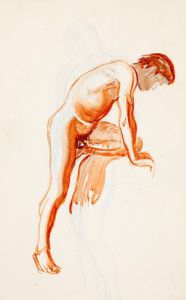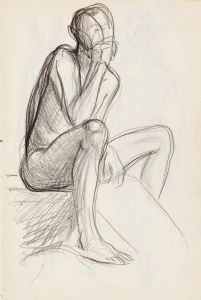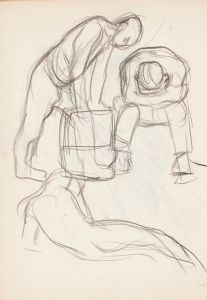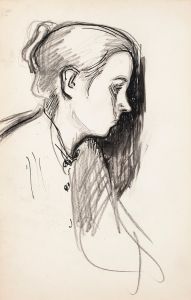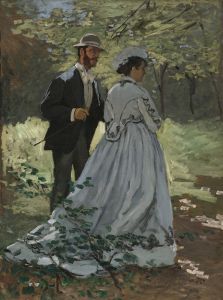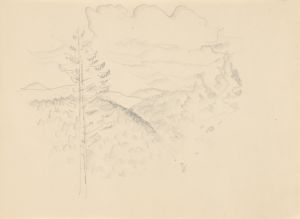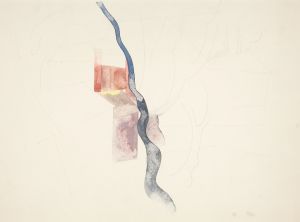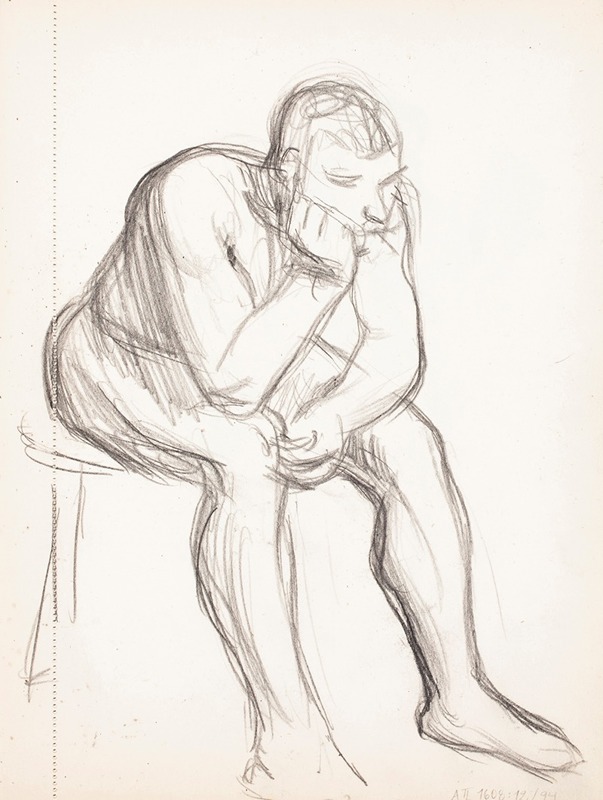
Istuva alaston mies miettii, luonnos
A hand-painted replica of Magnus Enckell’s masterpiece Istuva alaston mies miettii, luonnos, meticulously crafted by professional artists to capture the true essence of the original. Each piece is created with museum-quality canvas and rare mineral pigments, carefully painted by experienced artists with delicate brushstrokes and rich, layered colors to perfectly recreate the texture of the original artwork. Unlike machine-printed reproductions, this hand-painted version brings the painting to life, infused with the artist’s emotions and skill in every stroke. Whether for personal collection or home decoration, it instantly elevates the artistic atmosphere of any space.
Magnus Enckell's Istuva alaston mies miettii, luonnos (translated as Seated Nude Man Thinking, Sketch) is a work by the Finnish symbolist painter Magnus Enckell (1870–1925). Enckell is widely regarded as one of Finland's most significant artists of the late 19th and early 20th centuries, known for his contributions to Symbolism and his exploration of themes such as introspection, spirituality, and the human form.
This particular work, Istuva alaston mies miettii, luonnos, is a preparatory sketch that depicts a seated nude male figure in a contemplative pose. The sketch is characteristic of Enckell's interest in the human body as a subject of artistic study and his ability to convey emotion and thought through minimalistic yet expressive compositions. The figure's posture and expression suggest introspection, a recurring theme in Enckell's oeuvre.
Enckell's early works, including this sketch, often reflect the influence of Symbolism, a movement that sought to express ideas and emotions through symbolic imagery rather than direct representation. His use of muted tones and simplified forms in his sketches and paintings aligns with the Symbolist aesthetic, emphasizing mood and inner experience over external detail.
The sketch is believed to have been created during Enckell's formative years, a period when he was deeply influenced by his studies in Paris and exposure to contemporary European art movements. During this time, Enckell developed a fascination with the human figure, particularly the male nude, which became a central motif in his work. His approach to the nude was often idealized, focusing on the beauty and dignity of the human form.
While Istuva alaston mies miettii, luonnos is a lesser-known work compared to some of Enckell's larger and more finished paintings, it exemplifies his skill as a draftsman and his ability to capture the subtleties of human emotion. The sketch serves as a testament to his artistic process, offering insight into how he developed his ideas and compositions.
Magnus Enckell's legacy as an artist is significant in the context of Finnish art history. He was a key figure in the transition from the National Romantic style to modernism in Finland and played an important role in introducing Symbolist ideas to Finnish audiences. His works continue to be studied and appreciated for their technical mastery and emotional depth.
Further details about the specific provenance or current location of Istuva alaston mies miettii, luonnos are not widely documented.





